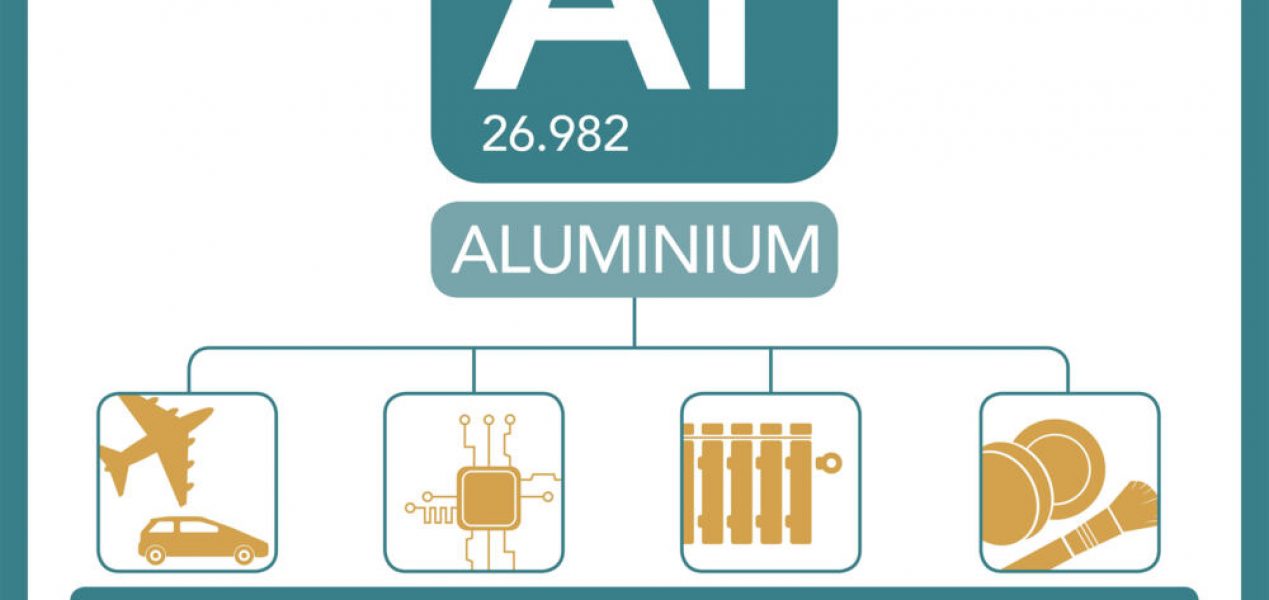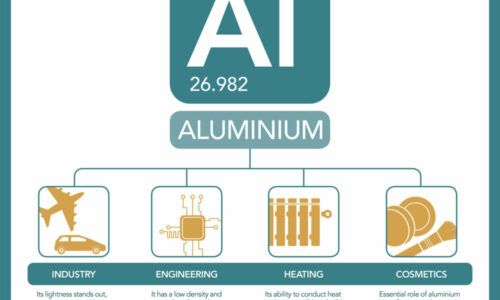Because of its prominent role in industry, aluminium is the second element to be highlighted in this series of monthly articles in commemoration of the International Year of the Periodic Table. Represented by the ‘Al’ symbol, aluminium has been used since classical antiquity. Known as alum, it was used in the form of a double salt and was used in very small quantities. The material we know and use today is far more ‘recent’, despite being the third most common element in the Earth’s crust.
The real difficulty is with its extraction. During the 19th century, production was so costly that aluminium was considered an exotic material at such exorbitant prices, and was prized equally to or more than silver or gold. It wasn’t until the end of the 19th century that a series of improvements in extraction techniques allowed production to increase. To give you a rough idea: in 1882, yearly extraction was barely 2 tonnes, while 18 years later it reached 6,700. That figure currently sits at about 33 million tonnes, with China and Russia as the largest producers.
Over time, it has become one of the most used metals in industry. “It has a combination of properties that make it highly useful and hard to substitute”, states Antonio Ruiz, Technical and R&D Director for Grupo Barcelonesa. Firstly, Ruiz highlights its lightness, highly valued in construction, the automotive industry, and the aeronautics and aerospace industry: “It has very low density and high mechanical resistance, making it possible to achieve highly resistant yet low weight elements”. Second, the expert praises its “capacity to conduct heat, which allows to build elements such as radiators, heat exchangers or low-weight heat sinks.”
Ruiz also emphasises that it is “highly malleable” and can “be combined with other metals to obtain alloys, or can be treated chemically and electrochemically to enhance its properties”. On the other hand, he points out that it is an “inert material highly resistant to corrosion, meaning it can be used in the food industry”. Lastly, the Barcelonesa Technical and R&D Director talks about the essential role aluminium plays in the perfume and cosmetics sector. “It offers many different finishes from the standpoint of light reflection and colour, which is very aesthetically important”, he explains. Another way of using aluminum is combined with other elements. For example, sodium laminates and aluminum polychlorides are widely used in water treatment.
Other significant advantages of aluminium include its long life, price stability, and its possibility to be recycled at reduced costs without losing any of its properties. All these various properties and uses make it difficult to imagine an industry without aluminium.


